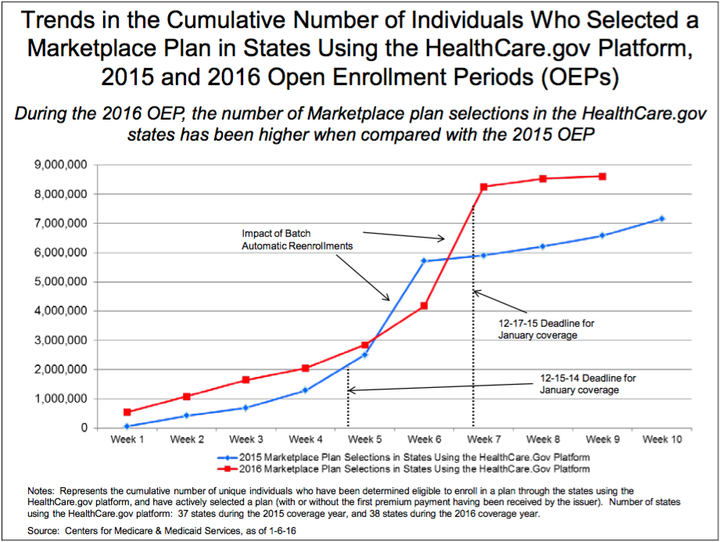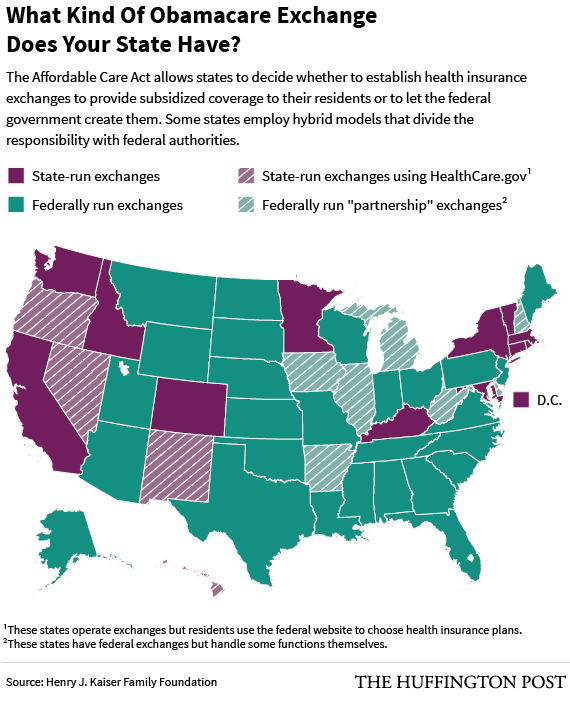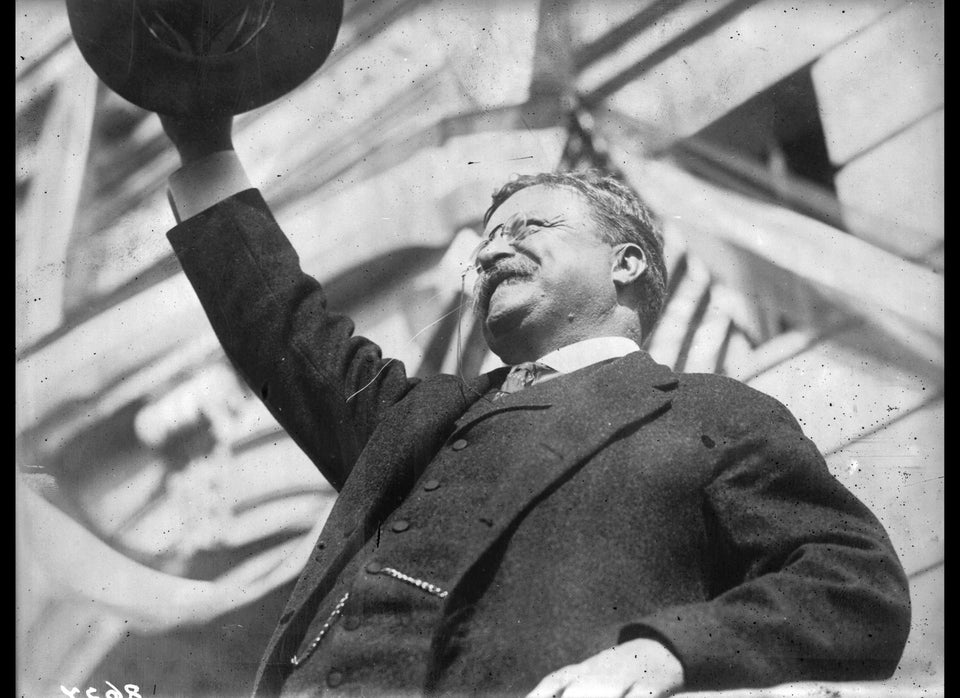
WASHINGTON -- Obamacare growth continues to outpace last year's sign-ups, with almost 11.3 million people enrolling into private health insurance plans via the exchange marketplaces through the last week of December, the Department of Health and Human Services disclosed Thursday.
The open enrollment period on the exchanges lasts until Jan. 31, and the tally of enrollees has already exceeded the department's projection of 10 million for the full year. Although this total likely will come down in the coming months as some consumers drop their coverage or fail to pay their premiums, these findings suggest these marketplaces are performing above expectations so far. During the comparable period a year ago, 9.5 million had enrolled nationwide.
Expanding the exchanges is key not only to covering more of the uninsured, but to stabilizing the new marketplaces for the future. More than sheer numbers, the makeup of the exchange customer base is crucial, especially after health insurance companies reported losses during the marketplaces' first two years because enrollees proved sicker and costlier than expected. That resulted in higher premium increases for this year compared to 2015, and raised concerns about the affordability of coverage on the exchanges.
President Barack Obama's administration sees promising indicators in the first national report on sign-ups under the Affordable Care Act in 2016. So far, 3 million of the enrollees are new to the exchanges.
In addition to a faster rise in enrollments since Nov. 1, 2015, than during the same period a year earlier, the Department of Health and Human Services touted the share of younger customers, who are vital to the financial success of the exchanges because they typically have fewer medical needs than older enrollees and because low-risk insurance customers are needed to cover the expenses for higher-risk ones.
Thirty-five percent of enrollees so far are younger than 35, and 26 percent are between ages 18 and 34, the report says. In the states where residents use HealthCare.gov, more than 40 percent of those 35 years old or younger are new to the exchanges.
These percentages are similar to those at the end of the 2015 sign-up period last March, but higher than those at the same stage of the enrollment push at the end of 2014, said Richard Frank, assistant secretary for planning and evaluation at the Department of Health and Human Services, during a conference call with reporters. At the end of 2014, 29 percent of HealthCare.gov enrollees were under 35, and 23 percent were between 18 and 34, the department reported at the time.
"What we are seeing is an uptick in new young consumers. We expect that to sort of accelerate as we hit the deadline," Frank said, which is what happened during the 2014 and 2015 enrollment periods.
“We’re encouraged that marketplace consumers are increasingly young, engaged and shopping for the best plan. We have more work to do before the next deadlines and our focus continues to be the consumer experience and educating consumers about available financial assistance and their choices," Health and Human Services Secretary Sylvia Burwell said in a press release.

Of the 11.3 million people signed up through late December, 8.5 million used the federal HealthCare.gov system in place for residents of 38 states, while 2.7 million enrolled via the marketplaces operated by 12 states and the District of Columbia. Eighty-three percent of enrollees qualified for tax credit subsidies to reduce their monthly premiums, and the average value of the subsidies is $294. Mid-level "silver" insurance policies again proved the most popular, with 68 percent of enrollees choosing these options over bronze, gold, platinum or the very-high-deductible "catastrophic" plans available mainly to people younger than 30.
During the past two enrollment periods, exchange officials stressed that enrollees should return to the marketplaces to shop for better deals rather than allow themselves to be automatically renewed into their policies. Volatile premiums -- including huge increases for some consumers -- are the main reason officials urged comparing plans and prices, and consumers have responded.
Just over half of the 8.2 million 2015 enrollees seeking coverage for this year actively shopped before choosing a plan, and 6 in 10 of those people selected a new policy. That's higher than during the previous sign-up campaign, and higher than the rate in other segments of the insurance market, said Andy Slavitt, acting administrator of the Centers for Medicare and Medicaid Services, during the conference call. In addition, the closure of a dozen health insurers and enrollment freezes at others forced hundreds of thousands of consumers to seek new coverage this year.

One factor that could encourage more people to sign up this year -- and larger numbers of young adults, in particular -- is that the tax penalty for not having health insurance is set to increase substantially, to a minimum of $695 per adult and $347.50 per child and to a maximum that could be thousands of dollars, depending on family size and household income.
Also on HuffPost:

